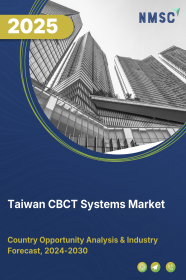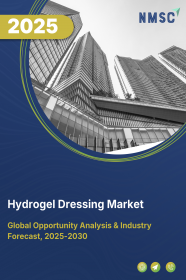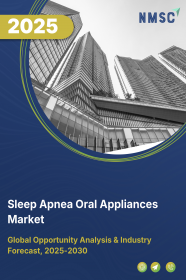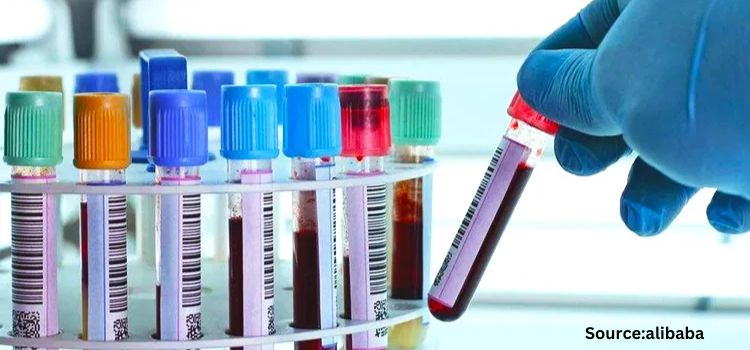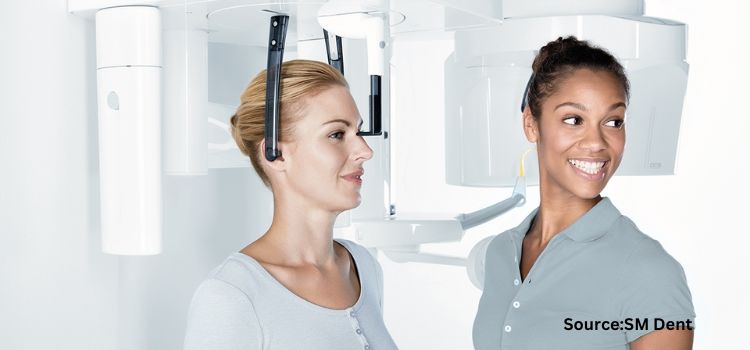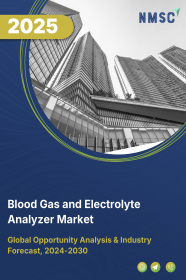
Blood Gas and Electrolyte Analyzer Market by Product (Blood Gas Analyzers, Electrolyte Analyzers, and Combined Analyzers), by Modality (Portable and Benchtop), by Medical Condition (Cardiovascular Disorder, Kidney Dysfunction, Respiratory Disorders, Diabetes, Sepsis, and Others), and by End User (Hospitals, Ambulatory Surgical Centers, and Diagnostic Centers) – Global Opportunity Analysis and Industry Forecast, 2023–2030
Industry: Healthcare | Publish Date: 19-Mar-2025 | No of Pages: 298 | No. of Tables: 216 | No. of Figures: 176 | Format: PDF | Report Code : HC52
US Tariff Impact on Blood Gas and Electrolyte Analyzer Market
Trump Tariffs Are Reshaping Global Business
Market Overview
The global Blood Gas and Electrolyte Analyzer Market size was valued at USD 1.8 billion in 2022, and is projected to reach USD 3.5 billion by 2030, with a CAGR of 6.9% from 2023 to 2030. A blood gas and electrolyte analyzer is a medical instrument used to measure the concentration of gases, such as oxygen (O2) and carbon dioxide (CO2) along with the levels of electrically charged minerals and ions, known as electrolytes, present in a patient's blood sample.
This analytical device is crucial in assessing a patient's respiratory function, acid-base balance, and electrolyte status, providing vital information for diagnosing and monitoring various medical conditions. By utilizing specialized electrodes, sensors, and reagents, the blood gas and electrolyte analyzer enables healthcare professionals to make informed treatment decisions and ensure optimal patient care in various clinical settings.
The Growing Geriatric Population Across the Globe Drives the Market Growth
The growing geriatric population worldwide is a major factor that drives the blood gas and electrolyte analyzer market growth. As the global population ages, there is an increased prevalence of age-related health conditions and chronic diseases among older adults.
According to the latest report published by the World Health Organization in 2022, the number of people aged above 60 years reached 1.4 billion in 2020, and is anticipated to reach 2.1 billion by 2050. Geriatric individuals are often prone to respiratory disorders, such as pneumonia and chronic obstructive pulmonary disease (COPD), requiring continuous blood pressure monitoring for effective management.
Additionally, age-related kidney function decline can lead to electrolyte imbalances, including sodium, potassium, and bicarbonate disturbances. Timely and accurate assessment of these parameters is essential in providing appropriate treatment and preventing complications. Blood gas and electrolyte analyzers enable healthcare professionals to swiftly measure and analyze blood gases and electrolytes, allowing immediate detection and management of respiratory and metabolic abnormalities in geriatric patients. This aids in optimizing patient care, reducing hospital stays, and improving overall health outcomes. These factors drive the market growth.
The Rising Prevalence of Various Chronic Diseases Boosts the Market Growth
The increasing prevalence of various chronic diseases worldwide is crucial in expanding the blood gas and electrolyte analyzer market. Chronic diseases, such as cardiovascular disorders, diabetes, respiratory ailments, and kidney diseases, have become increasingly prevalent across the globe.
For instance, according to the latest World Health Organization (WHO) report, non-communicable diseases (NCDs) have caused 41 million deaths yearly, contributing to 74% of the total deaths worldwide. Among NCDs, cardiovascular diseases caused 17.9 million deaths annually, followed by chronic respiratory diseases (causing 4.1 million deaths) and diabetes including diabetes-related kidney disease (causing 2 million deaths). These four disease groups collectively contribute to over 80% of premature NCD deaths. These conditions often result in disturbances in blood gases and electrolyte levels, necessitating regular monitoring and analysis. Cardiovascular diseases can affect blood circulation and oxygenation, leading to imbalances in blood gases.
Diabetes, whether it is type 1 or type 2, can cause metabolic abnormalities impacting electrolyte levels. Respiratory conditions, including asthma and COPD, can impair gas exchange and disrupt blood gas composition. Kidney diseases can result in electrolyte imbalances, such as elevated potassium or reduced bicarbonate levels. As there is an increasing prevalence of chronic diseases, healthcare providers increasingly utilize blood gas and electrolyte analyzers to monitor patients' blood gases and electrolyte levels. These analyzers provide timely and accurate results, enabling healthcare professionals to make informed patient treatment and management decisions.
High Acquisition and Maintenance Costs of Blood Gas and Electrolyte Analyzers Restrain the Market Growth
The substantial costs associated with the acquisition and maintenance of blood gas and electrolyte analyzers restrain the market growth. The high expenses incurred by healthcare facilities and providers pose a significant financial challenge, limiting their ability to adopt and utilize these analyzers effectively. The initial investment required for these instruments and the ongoing costs of calibration, maintenance, and reagents create a barrier for healthcare providers, especially smaller facilities or those operating with limited budgets. As a result, these factors are hindering the overall expansion and advancement of the market in the healthcare industry.
Advancements in Sampling Technology Create Opportunities for the Coming Years
Introducing non-invasive sampling techniques and improved sensor technology in the blood gas and electrolyte analyzer will create significant growth opportunities in the coming years. These advancements offer compelling advantages, including enhanced accuracy, sensitivity, and specificity of measurements, improved patient comfort, and reduced complications. Non-invasive sampling eliminates the need for invasive procedures, improving patient experience and enabling frequent monitoring.
Meanwhile, advanced sensor technology provides excellent reliability and precision, which can detect even minor changes in the concentration of these substances with great precision. Integrating these innovations improves patient care and opens new avenues for healthcare providers and clinicians. They facilitate real-time and continuous monitoring for proactive and personalized patient management. As a result, this convergence of non-invasive sampling and advanced sensor technology presents a promising landscape, driving efficiency gains and improved healthcare outcomes. These factors will create growth opportunities for the market in the coming years.
North America Holds the Lion’s share of the Blood Gas and Electrolyte Analyzer Market
The surging prevalence of various chronic diseases, such as cardiovascular disorders, respiratory diseases, and kidney dysfunction, has resulted in higher blood gases and electrolyte imbalances. Consequently, there is a growing demand for precise and timely monitoring of patients' physiological parameters to manage their conditions effectively. The recent report by the Centers for Disease Control and Prevention highlighted that chronic diseases, including heart disease, stroke, and diabetes, are the primary causes of death in the U.S. It revealed that 6 out of 10 adults in the U.S. are affected by one or more chronic diseases. This data highlighted the significant impact and prevalence of chronic diseases within the country, emphasizing the importance of effective management and monitoring through tools such as blood gas and electrolyte analyzer.
Moreover, key market players, such as Nova Biomedical Corporation, Abbott Laboratories, and OPTI Medical Systems, Inc., are instrumental in driving the growth of the blood gas and electrolyte analyzer market in this region. For instance, in June 2021, Nova Biomedical launched an enhanced Stat Profile Prime Plus blood gas analyzer by adding the capability to calculate and report mean corpuscular hemoglobin concentration (MCHC). With a comprehensive test menu consisting of 24 critical care whole blood tests, including blood gases, electrolytes, metabolites, and CO-oximetry, the Prime Plus analyzer enables clinicians to rapidly evaluate multiple factors in just one minute using a small blood sample. Such factors drive the market in North America.
Asia-Pacific is Growing Steadily in the Blood Gas and Electrolyte Analyzer Market
Asia-Pacific is growing steadily in the blood gas and electrolyte analyzer market share. As one of the most populated countries in the world, China recognizes the importance of providing high-quality healthcare facilities to its citizens. For instance, according to the National Health Commission, China had an extensive healthcare system as of 2021. The Government of China is making significant investments in the healthcare sector, with the number of hospitals reaching 36,570 in the country. In addition, China's medical equipment & devices manufacturing market is also anticipated to reach USD 48.8 billion by 2026. The government's commitment to enhancing medical infrastructure and ensuring access to advanced healthcare technologies has significantly expanded China's blood gas and electrolyte analyzer market.
According to the National Library of Medicine, the number of citizens aged 60 years and above in China is projected to rise from 12.4% (168 million) to 28% (402 million) by 2040. Thus, the elderly population is undergoing a significant burden of chronic non-communicable diseases (NCDs), with approximately 80% of deaths in this age group being attributed to these long-term health issues. This, in turn, boosts the demand for blood gas and electrolyte analyzers and drives the growth of the market.
As the government and healthcare organizations prioritize healthcare improvement, the Japanese Government made investments to develop its healthcare sector and encourage advancements in medical equipment and technologies. For instance, healthcare expenditure in Japan reached a record high of USD 38 billion in 2021, an increase of 4.6% compared to the previous year. This highlights the growing importance and focus on healthcare services and infrastructure in the country. In addition, with Japan's aging population, the demand for healthcare services and diagnostic tests is rising, further driving the need for these analyzers.
Moreover, there is an increasing prevalence of chronic diseases, including heart disease and cardiovascular disease (CVD). These conditions often require frequent monitoring of blood gas levels and electrolyte imbalances, making blood gas and electrolyte analyzers essential in managing these diseases effectively. The latest report published by the National Library of Medicine highlights the prominence of heart disease and CVD as the significant causes of death in Japan. This emphasizes the critical role of blood gas and electrolyte analyzers in diagnosing and monitoring these life-threatening conditions in the country.
Competitive Landscape
Various market players operating in the blood gas and electrolyte analyzer industry include Abbott Laboratories, Siemens Healthineers, Radiometer Medical, Roche Diagnostics, Nova Biomedical Corporation, Erba Mannheim, Techno Medica, Horiba Medical, Edan Instruments, OPTI Medical Systems, Medica Corporation, Werfen, i-SENS, Senso Care, Perlong Medical Equipment Co., Ltd, and others. These market players are adopting several strategies, such as business expansion across various regions, to maintain their dominance in the market.
For instance, in December 2022, Abbott Laboratories invested USD 479.55 million to expand its business for manufacturing medical devices such as test kits and screening devices in Ireland. Also, in April 2020, Siemens Healthineers received the U.S. Food and Drug Administration (FDA) clearance for its RapidPoint 500e Blood Gas Analyzer. The device provides fast and accurate measurements of critical blood parameters, benefiting critical care patients. Its user-friendly interface and compact design improve workflow efficiency, while advanced sensor technology ensures precise results with minimal sample volume.
Blood Gas and Electrolyte Analyzer Market Key Segments
By Product
-
Blood Gas Analyzers
-
Electrolyte Analyzers
-
Combined Analyzers
By Modality
-
Portable
-
Benchtop
By Medical Condition
-
Cardiovascular Disorder
-
Kidney Dysfunction
-
Respiratory Disorders
-
Diabetes
-
Sepsis
-
Others
By End User
-
Hospitals
-
Ambulatory Surgical Centers
-
Diagnostic Centers
By Region
-
North America
-
The U.S.
-
Canada
-
Mexico
-
-
Europe
-
The U.K.
-
Germany
-
France
-
Italy
-
Spain
-
Denmark
-
Netherlands
-
Finland
-
Sweden
-
Norway
-
Russia
-
Rest of Europe
-
-
Asia-Pacific
-
China
-
Japan
-
India
-
South Korea
-
Australia
-
Indonesia
-
Singapore
-
Taiwan
-
Thailand
-
Rest of Asia-Pacific
-
-
Rest of the World (RoW)
-
Latin America
-
Middle East
-
Africa
-
Key Players:
-
Abbott Laboratories
-
Siemens Healthineers
-
Radiometer Medical
-
Roche Diagnostics
-
Nova Biomedical Corporation
-
Erba Mannheim
-
Techno Medica
-
Horiba Medical
-
Edan Instruments
-
OPTI Medical Systems
-
Medica Corporation
-
Werfen
-
i-SENS
-
Senso Care
-
Perlong Medical Equipment Co., Ltd
Report Scope and Segmentation
|
Parameters |
Details |
|
Market Size in 2022 |
USD 1.8 billion |
|
Revenue Forecast in 2030 |
USD 3.5 Billion |
|
Growth Rate |
CAGR of 6.9% from 2023 to 2030 |
|
Analysis Period |
2022–2030 |
|
Base Year Considered |
2022 |
|
Forecast Period |
2023–2030 |
|
Market Size Estimation |
Billion (USD) |
|
Growth Factors |
The growing geriatric population across the globe The rising prevalence of chronic diseases |
|
Countries Covered |
28 |
|
Companies Profiled |
15 |
|
Market Share |
Available for 10 companies |
|
Customization Scope |
Free customization (equivalent up to 80 working hours of analysts) after purchase. Addition or alteration to country, regional, and segment scope. |
|
Pricing and Purchase Options |
Avail customized purchase options to meet your exact research needs. |

















 Speak to Our Analyst
Speak to Our Analyst



